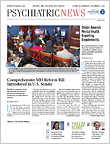The American Heart Association (AHA) has issued a statement supporting the inclusion of adolescent major depressive disorder (MDD) and bipolar disorder (BD) as independent risk factors for accelerated atherosclerosis and early-onset cardiovascular disease (CVD).
Specifically, the AHA recommends that MDD and BD now be classified alongside Kawasaki disease with regressed coronary aneurysms, chronic inflammatory disease, HIV infection, and nephrotic syndrome as tier II conditions that confer a moderate risk of disease.
“This represents a significant step in how we associate mental health and cardiovascular health,” said Benjamin Goldstein, M.D., Ph.D., a child and adolescent psychiatrist at the University of Toronto and chair of the AHA committee that developed this statement.
Up to now, physicians had appreciated that people with depression or bipolar disorder have higher rates of traditional cardiovascular risk factors like smoking, obesity, or diabetes, which leads to more incidence of heart disease.
After reviewing a multitude of available evidence, the AHA committee found that behavioral changes brought on by these psychiatric illnesses or adverse effects resulting from psychiatric medication did not fully explain this increased disease risk.
The exact biological mechanism by which MDD and BD exert their influence is unclear, though evidence is suggestive that they induce blood vessel damage through inflammation and/or oxidative stress.
“With this new statement, we want to raise awareness that even in the absence of any other risk factors, an adolescent diagnosis of depression or bipolar disorder will moderately raise the risk of cardiovascular problems in adulthood,” Goldstein told Psychiatric News.
Unlike the other four tier II conditions, MDD and BD are not uncommon in adolescents, affecting around 1 in 10 teens. And even that prevalence is likely somewhat underestimated, said Peter Shapiro, M.D., a professor of psychiatry at Columbia University Medical Center and member of APA’s Council on Psychosomatic Medicine.
“This statement shows that there is a large group of patients that deserve extra attention from pediatricians and cardiologists,” he said. “Psychiatrists can do their part by engaging other clinicians about the cardiovascular importance of mental health, while also identifying and treating mood disorders as soon as possible.”
Thus far, there are no studies that demonstrate that treating mood disorders in adolescents can reduce the risk of ischemic heart disease. Early identification and treatment of these disorders in adolescents will allow researchers to examine this question.
Based on the available evidence, psychiatrists do not need to make any significant changes to the treatment paradigms for teens presenting with BD and MDD, though Goldstein believes additional metabolic monitoring of patients taking medication for these disorders is warranted.
“The reality is that the best pharmacological treatments we have for mood disorders do pose a risk of weight gain, so we need to be cognizant of that as we guide our treatment,” he said.
Goldstein hopes the incorporation of MDD and BD as independent risk factors for CVD will spur more integration of mental health outcome measures in heart disease clinical studies and vice versa; such inclusion may help identify the nature of the mind-heart relationship, and perhaps identify treatment regimens that optimize mood and CVD benefits. ■
“Major Depressive Disorder and Bipolar Disorder Predispose Youth to Accelerated Atherosclerosis and Early Cardiovascular Disease” can be accessed
here.
